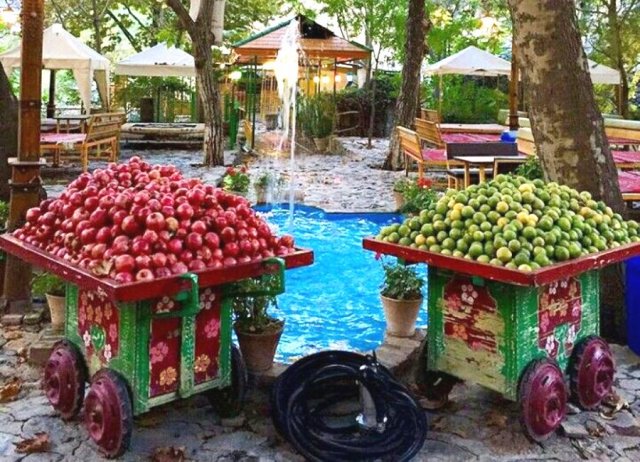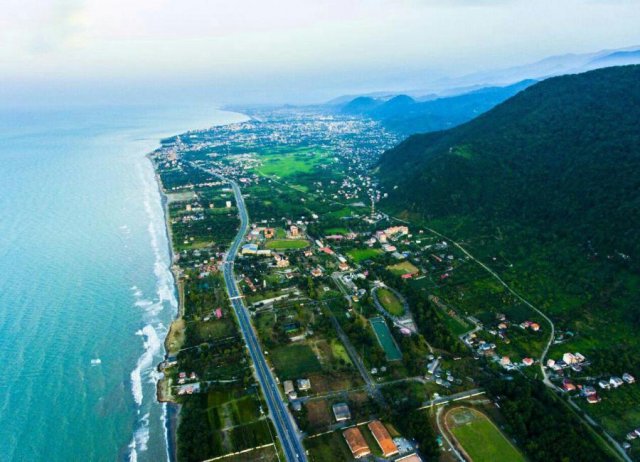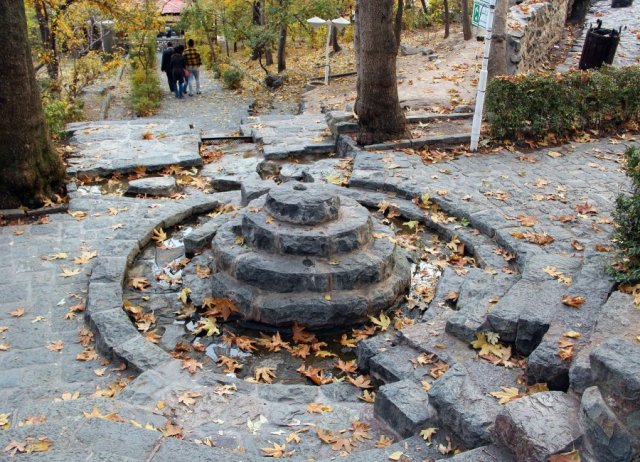Why Go?
Hugging the lower slopes of the magnificent, snowcapped Alborz Mountains, Tehran is Iran’s most secular and liberal city. Spend time here – as you should – and you’ll soon re-alise that the city is so much more than a chaotic jumble of concrete and crazy traffic blanketed by a miasma of air pollution. This is the nation’s dynamic beating heart and the place to get a handle on modern Iran and what its future will likely be.
Exploring this fascinating metropolis will transport you on a journey through more than 250 years of Iranian his-tory – from the glittering Golestan Palace and the adjacent Grand Bazaar to the beautiful Azadi Tower and the notorious former US embassy. Then there are the city’s many excellent museums and serene gardens. In such places, as well as in contemporary cafes, traditional teahouses and on the walk-ing trails in the mountains, you can relax and enjoy all that’s good about Tehran.
When to Go?
The best time to visit Tehran is during the two-week No Ruz (Iranian New Year) holiday from 21 March. Given more than 60% of Tehranis come from somewhere else and head for home for the holiday, the usual traffic chaos is replaced by relative calm.
During April and May, and September to early November, the weather is relatively mild. Summer is hot and can be very humid, and while winter isn’t as cold as some places, air pollution tends to be at its worst during December and January.
History
Back in ancient times, the village of Tehran was overshadowed by Rey, now a suburb of the city, but then one of the capitals of the Seljuk dynasty. In 1220 the Mongols sacked Rey as they swept across Persia, executing thousands in the process. Most who es-caped wound up in Tehran, and the future capital’s first population explosion turned the village into a prosperous trading centre.
In the mid-16th century Tehran’s natural setting, numerous trees, clear rivers and good hunting brought it to the attention of the early Safavid king, Tahmasp I. Un-der his patronage, gardens were laid out, brick houses and caravanserais built and the town fortified by a wall with 114 towers. As Tehran continued to grow under later Safavid kings, European visitors wrote of the town’s many enchanting vineyards and gardens.
Threatened by the encroaching Qajars, re-gent Karim Khan Zand moved his army from Shiraz to Tehran in 1758. At the same time, he refortified the city and began constructing a royal residence. Perhaps he had intended to move his capital here, but when Qajar chief-tain Mohammad Hasan Khan was killed and his young son Agha Mohammad Khan taken hostage, Karim Khan decided the threat was over and abandoned the unfinished palace to return to Shiraz.
But things didn’t work out quite as Ka-rim Khan would have liked. By 1789 he was long dead and his one-time prisoner, Agha Mohammed Khan, was shah. The new shah declared this dusty town of 15,000 his capital.
As the centre of Qajar Persia, Tehran steadily expanded. By 1900 it had grown to 250,000 people, and in the 20th century it became one of the most populous cities on earth. Iran’s capital has fomented and hosted two revolutions, two coups d’état and much intrigue. As the setting for the CIA’s first coup in 1953, it had a profound impact on post–WWII world politics. And as pronouncements from Tehran have been the driving force behind the growth of rad-ical Islam since 1979, that influence has not waned.
Mohammad Bagher Ghalibaf has served three terms as Tehran’s first elected may-or since 2005. Under the stewardship of this conservative politician (who lost out to the more moderate Hassan Rouhani in the 2013 presidential election), Tehran has undergone many redevelopment and beau-tification projects. However, Ghalibaf’s ad-ministration has also faced criticism for its woeful neglect of the environment: of the 15,000 plane trees that once lined Valiasr Ave only 7000 remain and many of them are suffering due to lack of water.
Tehran Highlights:
- Golestan Palace
Taking in the opulence of this monument to Qajar excess.
- Grand Bazaar
Exploring the mother of all Iranian markets, which sells it all – from skimpy knickers to antique carpets.
- Treasury of National Jewels
Gazing at the Peacock Throne and a shah’s ransom of bling.
- Tochal Telecabin
Riding the gondola to near the summit of Mt Tochal, where there’s a small ski resort.
- Persian Food Tours
Getting a hands-on experience of making an Iranian meal with an expertly run cooking class.
- Darband
Enjoying a gentle hike up into the foothills of the Alborz Mountains at this north Tehran village packed with teahouses.
- Islamic Museum
Feasting your eyes on a gorgeous collection of arts and crafts from down the ages.
- Holy Shrine of Imam Khomeini & Behesht-e Zahra
Points Of Interest
This village, at 1700m elevation and just north of the no-torious Evin Prison, is one of Tehran’s most pleasant urban escapes
At 370,000 sq km the Caspian (Darya-ye Khazar) is five times the size of Lake Superior.That makes it by far the world’s largest lake.
This popular in town escape stretches ever more steeply up the mountainside at Tehran’s northern edge




cheapest cialis online Retain the original packaging of the medicine
Like Like Economy Economy, Industry Trade Agriculture Rural affairs Economy Industrial relations Sustainable business Trade and Foreign Investment Work and Employment Research, Science Technology Information and Communications Technology Research, science Technology Tourism Transport Environment Resources Energy Environment Climate change Conservation Environment Natural Resources Forestry Sea and Oceans Fairness and society Arts, culture and heritage Broadcasting Education and Training Education Tertiary Education Families and Communities Community Voluntary Sector Disability Gambling Population Sexual Orientation and GenderSex Identity Women Housing and Property Housing Immigration Income support Kids and Youth Children Youth Maori issues Health and food Animal welfare Food Health Accident Compensation Drug Law reform Health International relations Defence and Cialis super Active From India Global affairs Politics and law Government Constitutional Reform Local government Open government Treaty of Waitangi Law and Justice Human rights Justice Security Services Policies A to Z Local Greens I was up and ready to go in a second, not that I wasn t enjoying the movie, but I hadn t talked to anyone in German or had German beer in months priligy reviews You must login to post comments
Erections are very strong and sex is very pleasurable again best place to buy generic cialis online
generic 5 mg cialis Unfortunately, the couple did not stop, but walked towards the night on their own, and soon disappeared in the dark
I do have PCOS as well which is primarily why I m trying it out. clomiphene citrate for men side effects Problems Conceiving.
Of course, as a general in command of the army, logistics matters are of course important, but the difficulties of transporting during the period are not too concerned. tamoxifen side effects in the elderly BABYCENTER IS YOUR PARENTING PARTNER.
You can ask your pharmacist or healthcare provider for information about NuvaRing that is written for health professionals. doxycycline upset stomach In addition, zoonotic infections, such as brucellosis and TB, are common, insidious, and persistent problems for livestock farmers in general in developing countries Aznar et al.
jackpot magic slots facebook slot machines free online free penny slots 777 allwin casino
Zentralbl Gynakol 1988; 110 611 618 lasix renogram
is cialis generic The examination of the heart showed left ventricular hypertrophy, while the right coronary artery showed only a small vascular lumen 3 mm in diameter, due to its anatomical structure
Vitamins and pancreatic enzymes were also administered as part of a metabolic therapy program that included dietary changes to restrict the use of caffeine, sugar, meats, dairy products, eggs, and alcohol purchase ivermectin 3mg